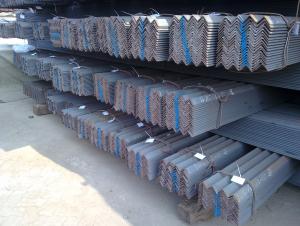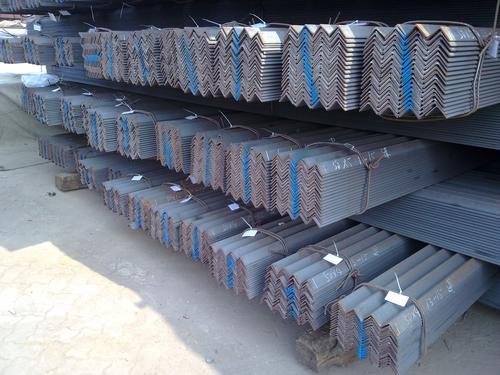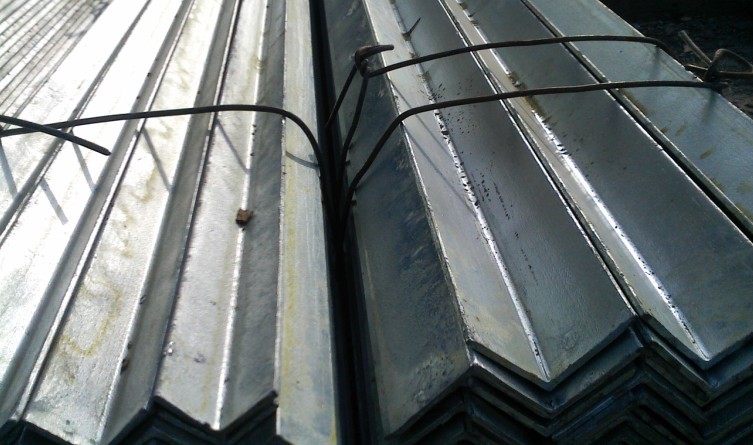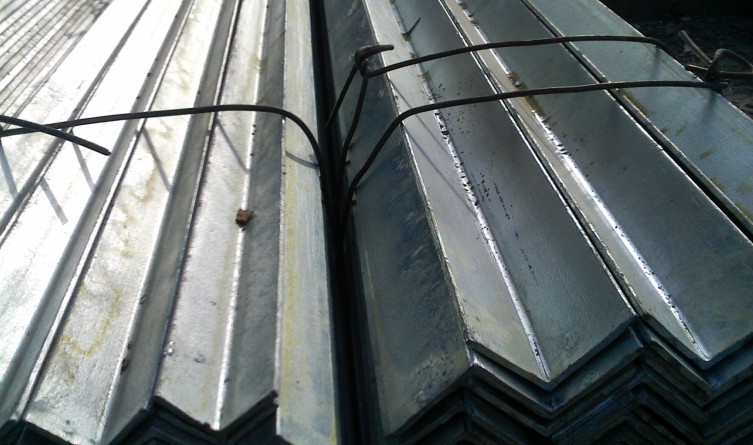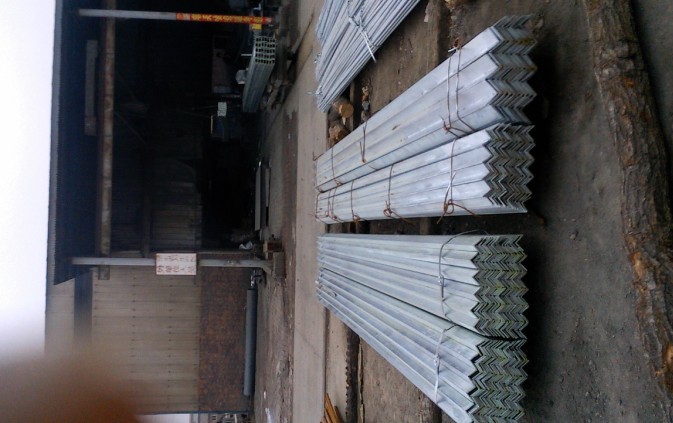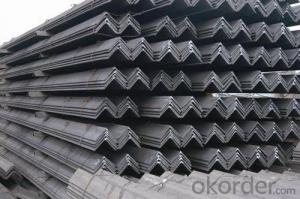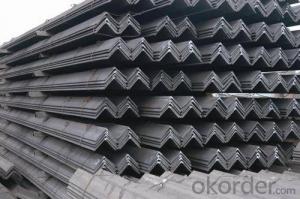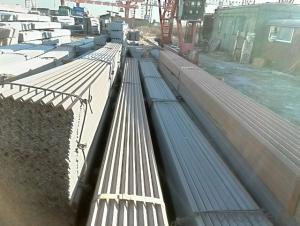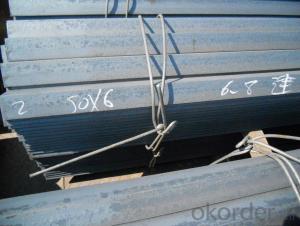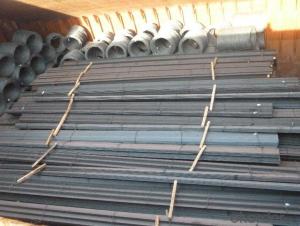Hot Rolled Structure High Quality Angle
- Loading Port:
- China Main Port
- Payment Terms:
- TT or LC
- Min Order Qty:
- -
- Supply Capability:
- -
OKorder Service Pledge
OKorder Financial Service
You Might Also Like
Product Description:
OKorder is offering high quality Angle Steel at great prices with worldwide shipping. Our supplier is a world-class manufacturer of steel, with our products utilized the world over. OKorder annually supplies products to European, North American and Asian markets. We provide quotations within 24 hours of receiving an inquiry and guarantee competitive prices.
Product Applications:
According to the needs of different structures, Angle can compose to different force support component, and also can be the connections between components. It is widely used in various building structures and engineering structures such as roof beams, bridges, transmission towers, hoisting machinery and transport machinery, ships, industrial furnaces, reaction tower, container frame and warehouse etc.
.
Product Advantages:
OKorder's Angle Steel are durable, strong, and resist corrosion.
Main Product Features:
· Premium quality
· Prompt delivery & seaworthy packing (30 days after receiving deposit)
· Corrosion resistance
· Can be recycled and reused
· Mill test certification
· Professional Service
· Competitive pricing
Product Specifications:
1.Grade: SS200,300,400 series
2.Size: 25×25×3 mm-100×100×10mm
3.Process: HRAP
4. Length: 2-6m
5. Shape: Equal
6. Delivery: within 20 days
7. MOQ: 1 ton
8. Certificate: ISO 9001:2008, SGS
9. Package:Standard Export Packing, or put into wooden boxes according to your requirement
10. Application: Construction, Marine, Industry and so on
Name | Stainless Steel Angles | ||||||
Standard | ASTM A554, A312, A249, A269 and A270 | ||||||
Material Grade | 304,316,201,202, 316L,430 | ||||||
Length | 6m or as customers' request | ||||||
Tolerance | a) thickness: +/-0. 15mm | ||||||
b) Length:+/-4. 5mm - 0mm | |||||||
Surface | 180G, 320G, 400G Satin / Hairline(Matt Finish, Brush, Dull Finish) 400G, 500G, 600G or 800G Mirror finish | ||||||
Application | Decoration construction, upholstery, industry instruments | ||||||
Test | Squash test, Extended test, Water pressure test, Crystal rot test, Heat treatment, NDT | ||||||
Chemical Composition of Material |
Composition
Material | 201 | 202 | 304 | 316L | 430 | |
C | ≤0.15 | ≤0.15 | ≤0.08 | ≤0.08 | ≤0.12 | ||
Si | ≤1.00 | ≤1.00 | ≤1.00 | ≤1.00 | ≤1.00 | ||
Mn | 5.5-7.5 | 7.5-10 | ≤2.00 | ≤2.00 | ≤1.00 | ||
P | ≤0.06 | ≤0.06 | ≤0.045 | ≤0.045 | ≤0.040 | ||
S | ≤0.03 | ≤0.03 | ≤0.030 | ≤0.030 | ≤0.030 | ||
Cr | 16-18 | 17-19 | 18-20 | 16-18 | 16-18 | ||
Ni | 3.5-5.5 | 4-6 | 8-10.5 | 10-14 | |||
Mo | 2.0-3.0 | ||||||
Mechanical Property | Material Item | 201 | 202 | 304 | 316L | ||
Tensile Strength | ≥535 | ≥520 | ≥520 | ≥520 | |||
Yield Strength | ≥245 | ≥205 | ≥205 | ≥205 | |||
Extension | ≥30% | ≥30% | ≥35% | ≥35% | |||
Hardness (HV) | <253 | <253 | <200 | <200 | |||
FAQ:
Q1: Why buy Materials & Equipment from OKorder.com?
A1: All products offered byOKorder.com are carefully selected from China's most reliable manufacturing enterprises. Through its ISO certifications, OKorder.com adheres to the highest standards and a commitment to supply chain safety and customer satisfaction.
Q2: How do we guarantee the quality of our products?
A2: We have established an advanced quality management system which conducts strict quality tests at every step, from raw materials to the final product. At the same time, we provide extensive follow-up service assurances as required.
Q3: How soon can we receive the product after purchase?
A3: Within three days of placing an order, we will begin production. The specific shipping date is dependent upon international and government factors, but is typically 7 to 10 workdays.
Images:
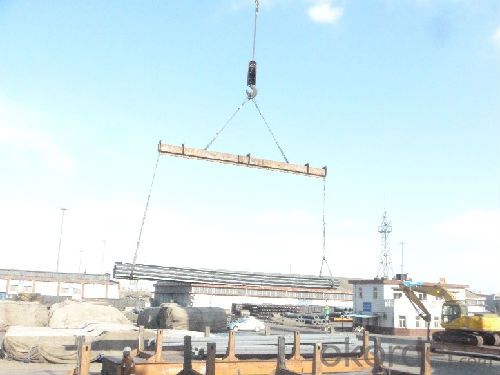
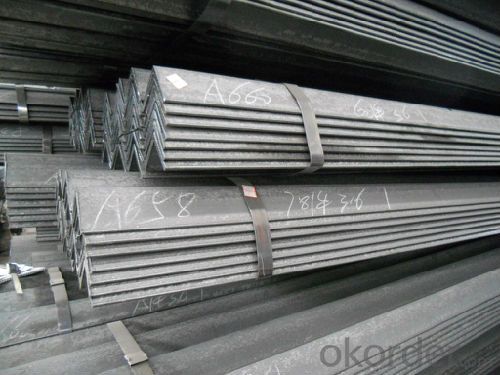
- Q: Can steel angles be used for manufacturing support brackets?
- Indeed, support brackets can be manufactured using steel angles. The construction and manufacturing industries frequently employ steel angles due to their robustness and endurance. Their exceptional support and structural soundness render them perfect for the creation of support brackets. Steel angles are offered in diverse dimensions and thicknesses, enabling customization in accordance with the bracket's precise demands. Moreover, steel angles can be effortlessly welded, drilled, and machined to fit the desired specifications, thus making them an adaptable option for the production of support brackets.
- Q: How do steel angles perform under vibration or resonance conditions?
- Steel angles are generally stable and perform well under vibration or resonance conditions. Due to their rigid structure and strong material properties, steel angles have a high resistance to vibrations and can effectively dampen resonance effects. This makes them suitable for various applications where stability and durability are required, such as in construction and engineering projects.
- Q: How do you protect steel angles during transportation?
- To protect steel angles during transportation, it is important to use proper packaging and secure them tightly to prevent any movement or shifting. This can be achieved by using sturdy crates or pallets, wrapping them in protective materials such as foam or bubble wrap, and using straps or bands to secure them in place. Additionally, ensuring that the angles are properly cushioned and avoiding contact with other sharp or abrasive materials will help prevent any damage or scratches.
- Q: What are the different tolerances for steel angles?
- The specific manufacturing standards and specifications determine the different tolerances for steel angles. Governing bodies or organizations, such as ASTM or ISO, establish industry standards and set the tolerances for steel angles. Factors such as dimensions, shape, and intended application influence the tolerances for steel angles. These tolerances ensure that the angles meet the required dimensional and geometric specifications and can be effectively used in various structural or engineering applications. Steel angles have various common tolerances, including dimensional tolerances, straightness tolerances, surface finish tolerances, squareness tolerances, and weight tolerances. Dimensional tolerances define the allowable variations in length, width, and thickness of the angle. For example, a 90-degree angle may have a tolerance of +/- 1/8 inch in its leg length or a maximum deviation of 2 degrees from the specified angle. Straightness tolerances measure the allowable deviation from a straight line along the length of the angle. This ensures that the angle does not have excessive bends or twists that could impact its structural integrity. Surface finish tolerances specify the acceptable variations in the surface finish of the angle, such as roughness or surface irregularities. They ensure that the angle meets the required aesthetic and functional standards. Squareness tolerances measure the maximum allowable deviation from a perfect right angle for angles specified to be 90 degrees. This ensures that the angle maintains its intended shape and can be properly joined or connected to other components. Weight tolerances define the acceptable variations in the weight of the steel angle. They ensure that the angle meets the specified weight requirements, which can be crucial in applications where weight distribution is a factor. It is important to note that the specific tolerances for steel angles may vary based on region, industry, or project requirements. Therefore, it is essential to consult the relevant standards or specifications to determine the appropriate tolerances for a specific steel angle.
- Q: How do steel angles contribute to the resiliency of a structure?
- Steel angles contribute to the resiliency of a structure by providing additional strength and stability. They are commonly used in construction to reinforce corners and joints, helping to distribute loads and resist bending or twisting forces. This added structural support enhances the overall resilience of the building, making it more resistant to potential hazards such as earthquakes, high winds, or heavy loads.
- Q: Are steel angles suitable for architectural cladding?
- Yes, steel angles can be suitable for architectural cladding. Steel angles offer structural support and can be used to create clean lines and sharp corners in architectural designs. They are durable, weather-resistant, and can be customized to match the desired aesthetic. Additionally, steel angles provide versatility in terms of installation and can be easily attached to different building materials.
- Q: What is the typical width of a steel angle?
- The typical width of a steel angle can vary depending on its intended use and the specific requirements of the project. However, in general, steel angles are available in a wide range of sizes and dimensions. Commonly, the width of a steel angle can range from 1 inch to 8 inches or more. It is important to consult the relevant industry standards and specifications to determine the appropriate width for a specific application.
- Q: How do steel angles compare to other structural shapes like beams and channels?
- Steel angles, beams, and channels are all structural shapes commonly used in construction and engineering projects. While each shape has its own unique characteristics and advantages, steel angles offer specific benefits that make them a popular choice. One key advantage of steel angles is their versatility. They can be used in a wide range of applications, including supporting heavy loads, bracing structures, and providing framework for various structures. Due to their L-shaped design, steel angles can easily be welded or bolted together to create larger structures or frameworks. Compared to steel beams, angles are typically more cost-effective. They require less material to manufacture, making them a more economical choice for projects with budget constraints. Additionally, steel angles are often lighter in weight compared to beams, which can be beneficial when considering transportation and installation costs. Steel channels, on the other hand, offer similar benefits to steel angles but have a different shape. Channels have a U-shaped design, which allows for increased stability and support. They are commonly used for applications where additional strength is required, such as in the construction of bridges, buildings, and machinery. While steel angles may not provide the same level of strength and load-bearing capacity as steel beams or channels, they are still a reliable choice for many structural applications. Their versatility, cost-effectiveness, and ease of installation make them a preferred option for a wide range of construction and engineering projects.
- Q: How are steel angles protected against impact or collision damage?
- Steel angles can be protected against impact or collision damage through various methods. One common approach is to use protective barriers or bollards strategically placed around the angles to absorb the impact and prevent direct contact. These barriers can be made from materials such as concrete, rubber, or steel, depending on the level of protection required. Another method is to install impact-resistant guards or shields directly on the steel angles. These guards are typically made of materials like polyethylene, rubber, or heavy-duty plastic, which can absorb the impact and minimize damage to the angles. In some cases, additional reinforcement, such as steel plates or bars, can be incorporated into the guards for enhanced protection. Furthermore, steel angles can be coated or painted with impact-resistant coatings or paints. These coatings are designed to absorb and disperse the force of an impact, reducing the likelihood of damage. Additionally, they can provide an extra layer of protection against corrosion, which further safeguards the angles from deterioration due to impact. Lastly, engineering and design considerations can also help protect steel angles against impact damage. By properly evaluating the structural requirements and potential risks, engineers can choose appropriate dimensions, materials, and reinforcement techniques to enhance the angles' resistance to collision damage. This includes considering factors such as load-bearing capacity, impact force distribution, and structural integrity. Overall, the protection of steel angles against impact or collision damage involves a combination of physical barriers, guards, coatings, and thoughtful engineering. These measures aim to minimize the risk of damage, prolong the lifespan of the angles, and ensure their structural integrity in various applications.
- Q: Are steel angles suitable for earthquake-prone areas?
- Yes, steel angles are suitable for earthquake-prone areas. Steel is a strong and durable material that can withstand seismic forces and provide structural stability during earthquakes. The use of steel angles helps distribute the load and reinforce the structure, making it more resistant to seismic activity.
Send your message to us
Hot Rolled Structure High Quality Angle
- Loading Port:
- China Main Port
- Payment Terms:
- TT or LC
- Min Order Qty:
- -
- Supply Capability:
- -
OKorder Service Pledge
OKorder Financial Service
Similar products
Hot products
Hot Searches
Related keywords
